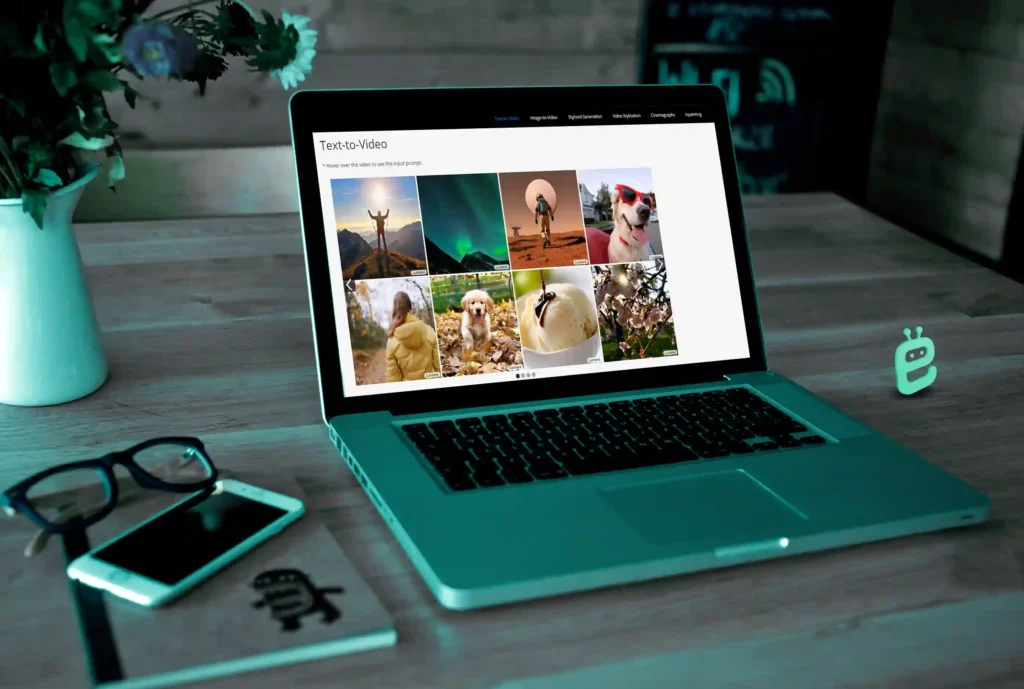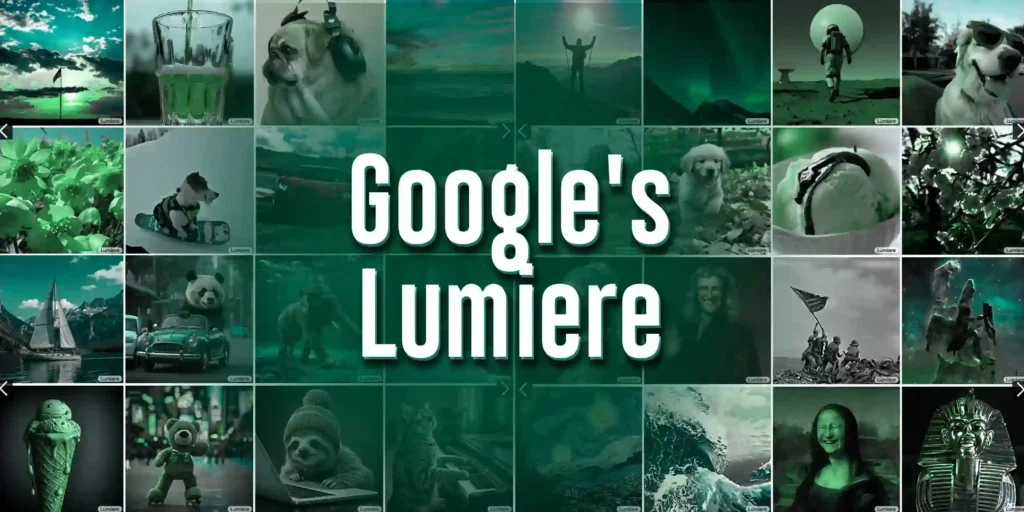The Google Lumiere Text-to-Video AI Model is a groundbreaking magical tool development in the field of artificial intelligence and video creation. This innovative technology, developed by Google as a research project, enables the generation of videos based on textual inputs.
Introduction
With the Google Lumiere Text-to-Video AI Model, users can now convert written text into engaging and dynamic videos. This powerful tool utilizes advanced machine learning algorithms to analyze and interpret the text, allowing it to generate corresponding visuals and animations.
The application of this AI model has immense potential across various industries. Content creators, marketers, and advertisers can leverage this technology to efficiently produce captivating videos without the need for extensive video production resources or expertise.
With the capabilities of the Google Lumiere Text-to-Video AI Model, businesses can streamline their video creation process, saving time and costs while still delivering high-quality content. It opens up new possibilities for storytelling, communication, and engagement through visually compelling videos generated from simple text inputs.
As we delve deeper into this blog, we will explore the inner workings of this remarkable AI model and its implications for video creation using artificial intelligence.
The Capabilities and Potential Applications of Google’s Lumiere
Google Lumiere is an innovative AI-powered tool that has the potential to revolutionize the way we create and consume video content. With its advanced capabilities, it enables automated video creation and storytelling using AI.

One of the key features of Google Lumiere is its ability to convert text into engaging videos. This means that users can simply input a piece of text, and the tool will automatically generate a visually appealing video based on the content. This opens up a wide range of possibilities for content creators, as they can now easily transform their written ideas into captivating visual stories.
The potential applications of Google Lumiere are vast. From marketing campaigns to educational videos, this tool can be used in various industries and sectors. For businesses, it offers a convenient way to create promotional videos without the need for extensive video editing skills or resources. Content creators can also leverage this technology to bring their stories to life in a visually compelling manner.
Google Lumiere has the potential to enhance accessibility in video content creation. By automating the process and eliminating barriers such as language or technical skills, more individuals can participate in creating engaging videos.
Google Lumiere is an exciting development in AI-powered visual storytelling. Its capabilities in automated video creation and text-to-video conversion have vast potential applications across industries. As this technology continues to evolve, we can expect it to play a significant role in shaping the future of video content generation.
A Step-by-Step Explanation of the Process
Google Lumiere is an advanced natural language processing (NLP) model developed by Google. It utilizes cutting-edge technology to generate video content based on text descriptions. In this section, we will provide a step-by-step explanation of how Google Lumiere works and the process behind it.
1. Training Data: To create a powerful model, Google Lumiere requires a vast amount of training data. This data includes paired text descriptions and corresponding video clips. The model learns from this data to understand the relationship between textual information and visual content.
2. Natural Language Processing: The first step in the process involves natural language processing techniques. Given a textual description as input, Google Lumiere analyzes the text to identify key concepts, objects, actions, and relationships within the description.
3. Image Recognition: Once the textual information is processed, Google Lumiere employs image recognition algorithms to identify relevant visual elements that correspond to the given text description. It recognizes objects, scenes, people, and other visual components within the video clips used for training.
4. Audio Recognition: In addition to image recognition, Google Lumiere also incorporates audio recognition capabilities into its model. It analyzes audio cues within the video clips to further enhance its understanding of context and generate more accurate visual representations.
5. Video Generation: With all the processed information from steps 2-4, Google Lumiere generates a new video that aligns with the given textual description. By combining its knowledge of object recognition and audio analysis with NLP techniques, it creates visually coherent videos that closely match the intended content described in text form.
Google Lumiere represents an exciting advancement in AI technology by bridging NLP with image and audio recognition in video generation. Its ability to understand textual descriptions and transform them into visually engaging videos opens up new possibilities for various industries such as entertainment, advertising, education, and more.
The Benefits and Impact of Google Lumiere
Google Lumiere is an AI model developed by Google that has revolutionized content creation and marketing strategies. One of the key benefits of this innovative tool is its ability to enhance user engagement through videos generated by AI.
Creating high-quality videos requires a significant investment in terms of time, resources, and expertise. However, with the introduction of Google Lumiere’s text-to-video generation tool, the content production process has been streamlined. Copywriters and marketers can now easily transform their written content into engaging videos without the need for extensive video editing skills or expensive equipment.
Creating high-quality videos requires a significant investment in terms of time, resources, and expertise. However, with the introduction of Google Lumiere’s text-to-video generation tool, the content production process has been streamlined. Copywriters and marketers can now easily transform their written content into engaging videos without the need for extensive video editing skills or expensive equipment.
The text-to-video generation tool provided by Google Lumiere allows for greater scalability in content production. Copywriters can quickly generate multiple videos based on their written content, enabling them to reach a wider audience across various platforms.
Google Lumiere’s AI capabilities have brought numerous benefits to both content creators and marketers alike. With its enhanced user engagement through AI-generated videos and streamlined content production process with the text-to-video generation tool, businesses can effectively elevate their marketing strategies and deliver compelling visual experiences to their target audience.
Potential Challenges and Limitations of Using Google Lumiere
While Google Lumiere offers an innovative solution for converting text into videos, some potential challenges and limitations need to be considered. One major concern is the accuracy of the visual representation of the text content. The conversion process may not always capture the intended meaning or context accurately, leading to misinterpretation or confusion.
Another important consideration is the potential privacy implications of generating videos from written texts. Users must be cautious about sharing sensitive or personal information in written form, as it could be transformed into a video format that may compromise their privacy.
It is crucial to thoroughly evaluate and test Google Lumiere’s capabilities before relying solely on its text-to-video conversion feature. Content creators should carefully review and edit the generated videos to ensure they align with their intended message and maintain accuracy.
Users should remain aware of any copyright or intellectual property concerns when using Google Lumiere for text-to-video conversion. Proper attribution and permissions must be obtained when utilizing copyrighted material in video form.
While Google Lumiere offers exciting possibilities for transforming written content into engaging videos, it is essential to assess its limitations in terms of accuracy and privacy implications before implementing it extensively.
The Future of Text-to-Video AI Models
The future of text-to-video AI models holds great promise in revolutionizing the way we create and consume visual content. As technology continues to advance, we can expect further enhancements in automated video generation based on textual inputs.
One exciting possibility is the ability to generate high-quality videos from written scripts or descriptions. This can be particularly beneficial for industries such as advertising, entertainment, and e-learning, where video content plays a crucial role. With the help of AI models, businesses and individuals can save time and resources by automating the video creation process.
As these AI models evolve, we can anticipate improvements in their ability to understand context, emotions, and visual aesthetics. This means that text-to-video AI models will not only be able to accurately translate text into visuals but also capture the intended tone and style of the content.
Advancements in natural language processing (NLP) techniques will contribute to more accurate interpretations of textual inputs. This will enable AI models to generate videos that align closely with the original intent of the text.
With increased access to vast amounts of multimedia data and improved machine learning algorithms, we may witness a rise in personalized video creation. Text-to-video AI models could potentially analyze individual preferences and tailor videos accordingly, providing unique viewing experiences for each user.
Further advancements in automated video generation technology based on textual inputs hold tremendous potential for various industries. As these technologies continue to evolve and mature, we can expect more efficient and creative ways of producing engaging visual content that meets our ever-growing demands.
FAQ
Lumiere stands out due to its cutting-edge technology that seamlessly integrates language understanding and video synthesis. It produces videos with a high degree of realism and coherence, capturing nuanced details present in the input text.
Yes, Lumiere is versatile and can be applied to a wide range of content genres. Whether it’s educational videos, marketing content, or storytelling, Lumiere adapts to the given context, making it a valuable tool for content creators.
Google aims to make Lumiere accessible to developers through APIs and tools, enabling them to integrate this revolutionary technology into their applications and workflows seamlessly.
Wrap Up
In conclusion, embracing the power of Google Lumiere can revolutionize the way we create and generate creative video content. With its advanced AI technology and video editing capabilities, this tool opens up endless possibilities for content creators and marketers.
